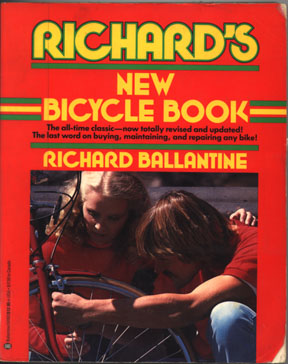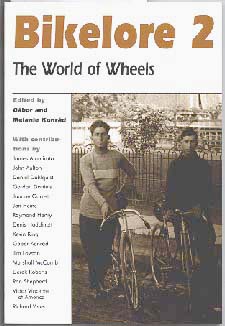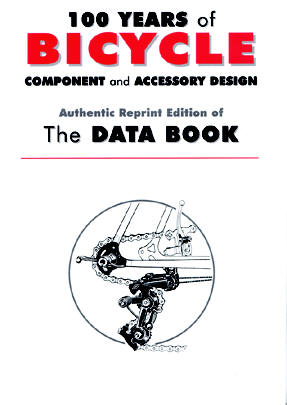Cycling Through Mississippi
by Ken Stange
(Excerpted from his book-in-progress.)
My son left North Bay, Ontario, in 1990 to attend university in Montreal, a wonderful city of passion and drama. He comes home regularly, just as I leave home regularly. He returns for the peace. I leave to get away from the peace.
This particular morning both Chris and I were leaving for our annual bike trip. Every summer since my son was fourteen we’ve taken a cycling tour together. Our plan: to cycle out of New Orleans and up and through the heartland of America, back up the map to our homeland, Canada.
Coordinates: The murky Voodoo City. On the road.
A definition from physics: heat is movement.
Coordinates: Day 3. 9:00 a.m. 197.8 km. 80 degrees F.
Coordinates: 11:15 a.m. 236.0 km. Magnolia, Mississippi.
The Mississippi Eatery. I was expecting Mississippi to be even poorer and more destitute than Northern Louisiana. But if this town is typical of the state, Mississippi is going to be the epitome of Southern Charm.
We are sitting on the open verandah of an old manse which has been converted into a restaurant, sitting, sipping “sweet tea” and munching on biscuits with honey. The waitress is constantly refilling our glasses and asking if we’re “all right.” We’re more than all right; we’re deeply contented as only travellers resting can be.
We watch people stroll by, although stroll is far too weak a word to describe the way these folk walk. It is like watching a film in slow motion. ‘Tis no misconception, the idea of the American South as an almost painfully unhurried place. When I first visited New Orleans a year ago, I remember sitting on a bench in Audubon Park and watching the joggers and cyclists on the park trail. As they passed, I had a vivid hallucination that they were underwater, their every movement attenuated by some invisible resistance, buffered, slowed. It was truly strange. The cyclists were bent over in their racing posture, but they seemed to be barely moving. I suppose the explanation lies in the heat. The physical science definition of heat may be movement, but biologically, it slows ya’ll down.
We mount our bikes. The cook waves goodbye as we coast out on to the street. “Ya’ll come again.” Sadly, I doubt we ever will.
Coordinates: 1:36 p.m. 259.7 km. North of Summit, Miss.
Garbage, garbage everywhere. Chris is appalled. “What’s with these people” he asks, as he clears a place to sit by sweeping beer cans and other litter out of the way with his foot.
“Amerika the Beautiful,” I reply.
“It is beautiful, except for the garbage everywhere. Are all Americans slobs?”
This roadside park is no anomaly. I’m sure that nowhere along the 250 kilometers of highway we’ve travelled have we seen more than a few meters of shoulder that didn’t contain some kind of litter.
Yet Americans seem to love their wild places. Their parks and nature preserves draw millions of people. These folk must go to appreciate the beauty, so why then do they deface it? It’s as if most visitors to the Louvre were to casually spit on the Rembrandts.
Coordinates: On the road.
The central principle of fractal geometry: dimensions aren’t integers. Fly from Los Angeles to San Francisco. How many miles of coast separate these two cities? Walk along the rugged coastline. How many miles do you walk? Drop to your knees and crawl the distance, measuring with string the wavering pattern of water on sand and rock. When you unwind your giant ball of string, how long is it?
How far you travel depends on how closely you follow the details. One’s journey is never as the crow flies; it is always as the eye scans. Yes, length is an inadequate concept. And distance is a subjective one.
Coordinates: 5:00 p.m. 291.0 km. Brookhaven, Miss.
Coming into Brookhaven we cruised down affluent residential streets lined with dignified and elegant southern mansions. I wanted to stop and knock at one of the big front doors. Surely, I argued, a southern belle would answer the knock, and intuitively discerning our thirst, serve us mint juleps on her spacious verandah.
But no go. Chris vetoed my proposal. The kid underestimates his father’s charm and his own good looks.
Oh well. Instead we rode into downtown and asked two gruff men loading a truck where we could get a cold beer. They seemed most perplexed why anyone would want such a thing. It seems we are in what is called a “damp county” This means that you can buy beer but no wine or hard liquor. And it seems that even beer is frowned upon.
I think the chink place serves beer,” said one of them.
Well, we have no complaints about the “chink place.” The beer is cold.
I flip a coin. Chris calls it wrong. He has to find a phone and campground. I smoke a cigarette and eavesdrop on a nearby table. Three teenage girls are gibbering about plans to go to Jackson to hear some heavy metal band called Eviscerated Chickens or some such thing.
Chris returns and reports: “There was only one campground in the directory that isn’t back the way we’ve come.”
“How far is it?” I’m feeling full and content and as inertial as a boulder at the bottom of a hill. These rides to camp after an evening meal are always too far.
“He says three miles.”
“That’s not bad.”
“But the cook says it’s more like 12 miles.”
I moan. “Have you noticed that people here have no ability to judge distance?” <p.”They all drive. Drivers measure distance in time. C’mon, dad, it isn’t that late. Even another 12 miles isn’t going to kill you.”
“My butt hurts,” I whine.
DAY 5: THE FIRST CENTURY
Coordinates: 8:15 a.m. 418.1 km. Jackson, Miss.
Today we start riding The Natchez Trace. The Trace runs from Natchez in the deep South of western Mississippi up to the mid-South of Nashville, Tennessee. An almost 500-mile green swath of sanity slicing diagonally through the corrupt heart of the South.
Since the first campground is at milepost 193, today’s ride from where we’re starting on the Trace is almost certainly going to be what cyclists call a “century” – a 100-mile day. This adds even more to our anticipation. A century!
The idea of century rides goes back a century, to 1890, when two Louisville men dared each other to ride a 100-mile loop around their city. That cyclists even then were a little peculiar is confirmed by their taking on this challenge in the dead of winter. They rode through a snowstorm, and successfully completed this first century in 18.5 hours. Obviously their physical health was better than their mental health.
Coordinates: 11:04 456.1 km. Trace Cypress Swamp.
The Trace is everything the promo material claimed it to be and more. (And there isn’t even any garbage by the side of the road.) The pavement is good. The traffic is light, slow moving.
Like good tourists, we’ve stopped at every “historic site,” along the way. We’ve visited the Boyd Burial Mounds built over a thousand years ago and pressed the button that starts a recorded lecture on the site’s spiritual significance. (The irony and sacrilege of this tourist gimmick making us shake our heads.)
We hiked a boardwalk through a bald cypress swamp. This place is justification enough for the whole trip. Some wild places are truly haunted, and resonate so strongly with the rhythms of life, death and decay that even humans (usually so pathetically insensitive to nature’s rhythms) can feel the vibrations. This swamp, with its strangely human trees rooted in black water, is such a magic place.
Riding.
Riding a long distance is like writing a book. There is just so much one can do at one “sitting,” but each day adds up and the story unfolds.
Riding.
When riding sometimes I don’t think at all in the ordinary sense of that word, so one could say that riding is a form of meditation. There is a special kind of “thinking” that is totally impersonal, disinterested and intense, which is an altered state of consciousness. If this is what meditation is about, well then I most often meditate when I’m problem-solvingä and when I’m riding.
Riding.
Riding, I “think” about death, about becoming road kill, about how important my reflexes can suddenly become. And, strangely, I enjoy these thoughts. Sudden death while doing something you love has to be one of the kindest, most dignified ways to sign out. I only hope I’m at least 80, still going at least 20, when some idiot motorist delivers the coup de grace.
Riding.
Riding, I “think” about all the dead armadillos we”ve passed. The body count must be more than 50. They almost outnumber the shoes.
Riding.
Riding, I “think” about the physical sensation of the road, how the feel of the pavement comes up through the frame of the bicycle and becomes part of my own frame, and also the feel of the oh-so-palpable air I am pressing through.
Coordinates: 7:30 p.m. 573.4 km. The Trace, Miss.
I am tiring and our day’s destination is nearing. The mileposts are farther apart than they were earlier in the day. A rose is a rose is a rose. Maybe for roses, Gertie. But that a mile is a mile is a mile just ain’t so.
As we’re climbing a hill, a car pulls up, slowing to our pace. A young man is driving; a young woman is in the passenger seat. She unrolls her window, and he leans over and starts chatting with us as he drives. “Y’all the fellas that were in Jackson last night?” I nod. “We all heard about you. Most folks thought you were putting ’em on.” Most folks? I really want to ask, but I don’t. I stick with nodding, and let Chris carry the weight of our conversation up the hill. But damn it, Chris doesn’t ask where they heard about us. Instead he starts praising the beauty of The Trace. He talks with them for a few minutes, then they wish us well and speed off, just as we crest the hill.
Coordinates: 7:56 p.m. 580.4 km. Jeff Busby Park, Miss.
We come over a rise and see the sign for the park, thank old St. Christopher, for it is now almost dark. I look down at my odometer. “We’re about a klick short of 160,” I say to Chris. “No way,” he replies. “Not acceptable.” In silent agreement we coast down the hill and right past the park. This hurts. We ride another half-kilometer and turn around. The trip meter rolls to 160 klicks, 100 miles, at the precise moment we swerve into the park.




